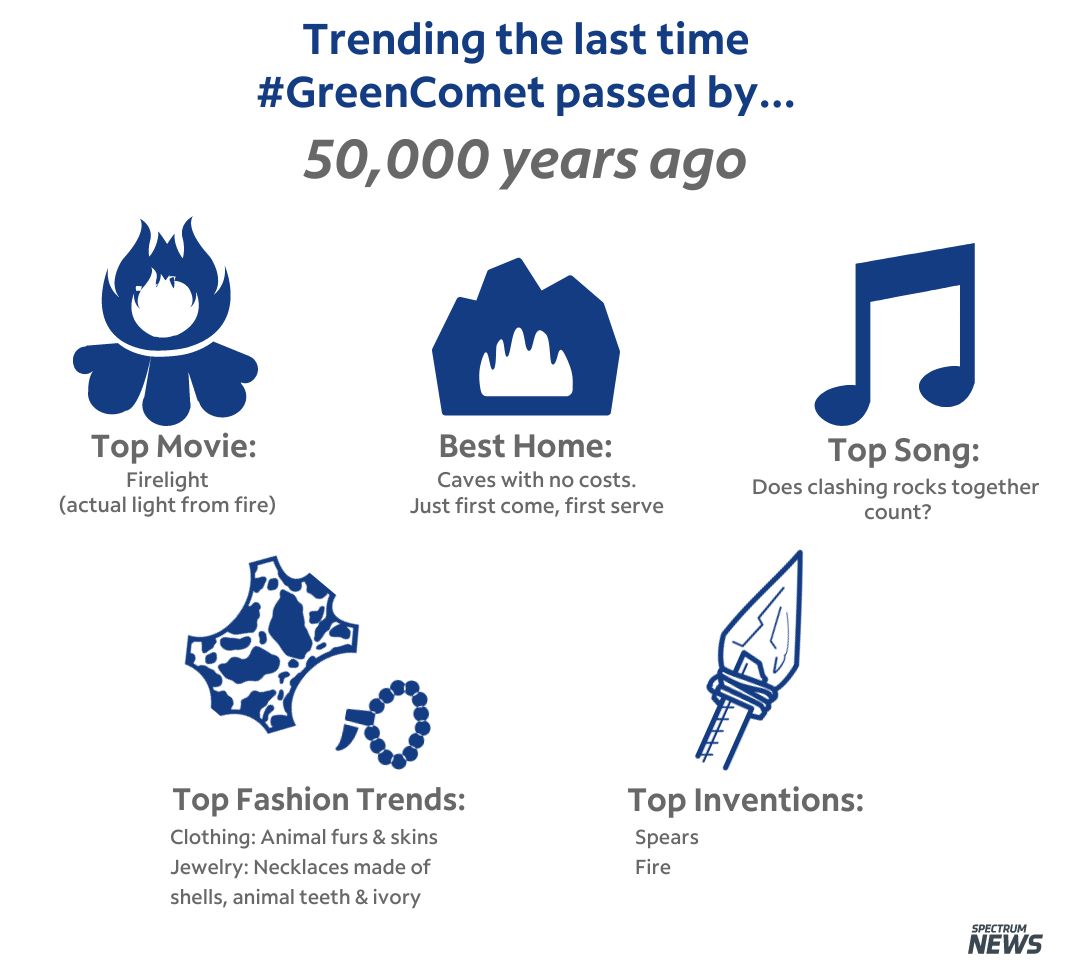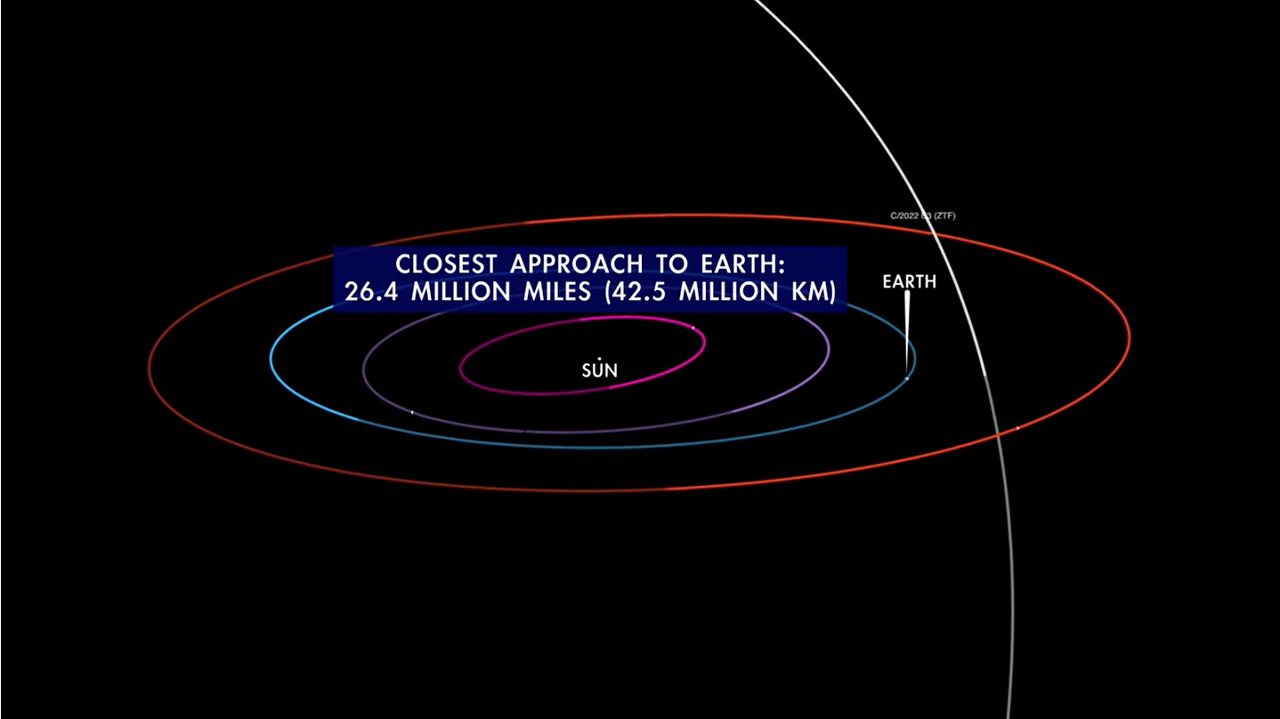Later this month, Comet C/2022 E3 (ZTF) could be visible to the naked eye in dark night skies.
It has an orbital period of roughly 50,000 years, meaning that the bright blue-green comet with a golden tail hasn’t been visible from Earth since Neanderthals roamed the planet.
According to NASA, the comet was at perihelion, its closest approach to the sun, on Jan. 12, and will be at perigee, its closest approach to Earth, on Feb. 1. It will come within around 100 million miles of the sun and 26 million miles of Earth.
NASA chart showing the orbital path of Comet C/2022 E3 (ZTF) as it passes Earth. (Credit: NASA/JPL-Caltech)
Astronomers discovered the comet back in March 2022 using a wide-field survey camera at the Zwicky Transient Facility in California.
How to see it? Later this month through early February, it could be visible to the naked eye in dark skies near the horizon during the early morning hours while looking toward the northeastern sky.
Since the brightness of comets is notoriously unpredictable, according to NASA, you will have a better chance at seeing the comet using binoculars or a telescope.
If you miss it, you won’t have another chance to see Comet C/2022 E3 (ZTF) for 50,000 years. With any luck, we won’t be doing the same things our ancestors were doing the last time this comet came around.

Thankfully, there will be plenty of other opportunities in 2023 for stargazers to pull out the telescope.
Our team of meteorologists dive deep into the science of weather and break down timely weather data and information. To view more weather and climate stories, check out our weather blogs section.

